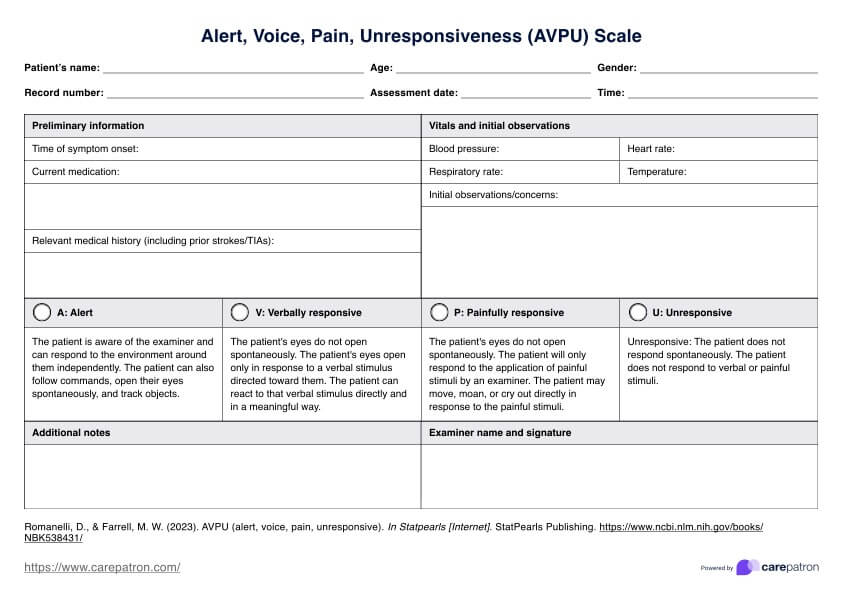The Alert, Voice, Pain, Unresponsive (AVPU) Scale scores are based on the patient’s brain function based on patient response to stimuli. An Alert score (A) indicates full consciousness, while an Unresponsive score (U) suggests decreased mental status and possible severe brain dysfunction.

AVPU Scale
Learn more about the AVPU Scale, a tool for rapid, consistent assessment of a patient's mental state. Use our free template today.
AVPU Scale Template
Commonly asked questions
The four indicators are Alert, Voice, Pain, and Unresponsive. A patient may be alert, responds to either verbal or painful stimuli, or may not respond at all (unresponsive).
While the Glasgow Coma Scale (GCS) provides a more detailed assessment, the AVPU is quicker and easier to apply in emergency settings. The Alert, Voice, Pain, Unresponsive (AVPU) Scale may be preferred for initial assessments, while GCS is often used for more comprehensive evaluations.
EHR and practice management software
Get started for free
*No credit card required
Free
$0/usd
Unlimited clients
Telehealth
1GB of storage
Client portal text
Automated billing and online payments











